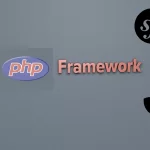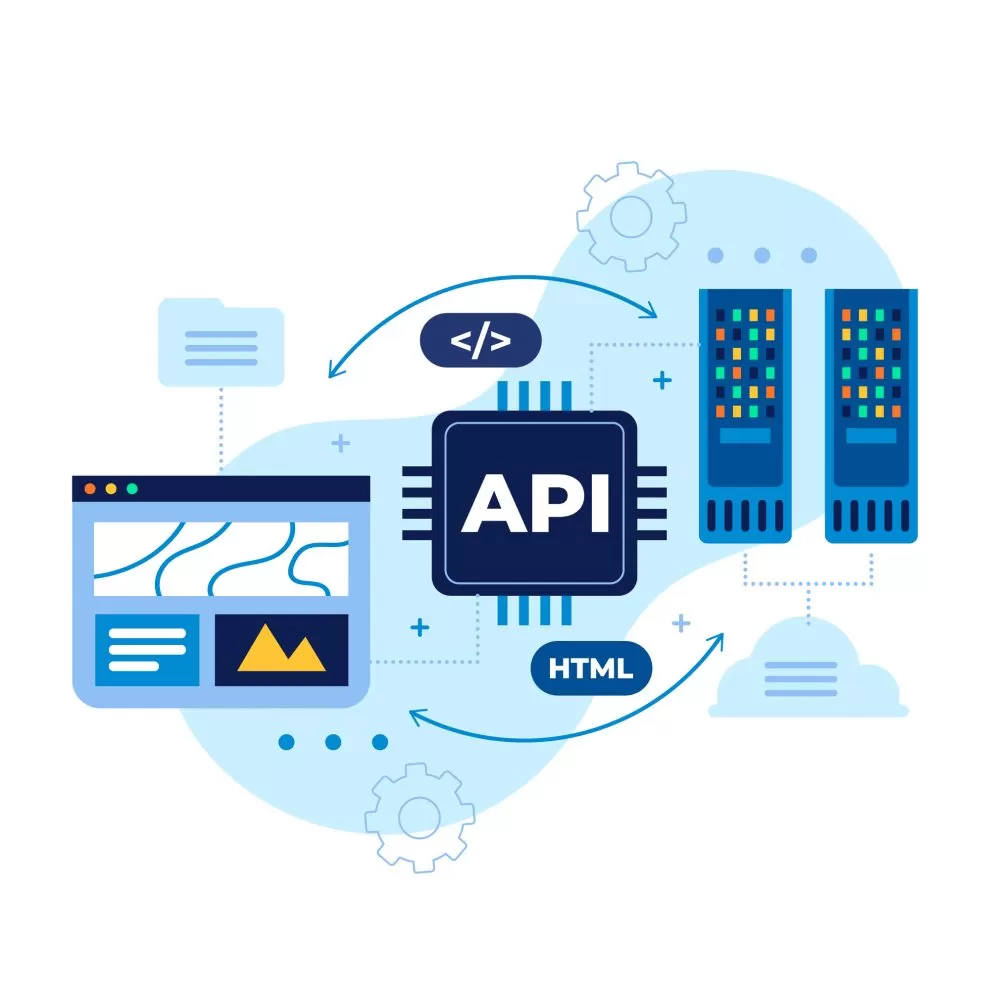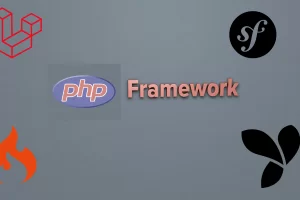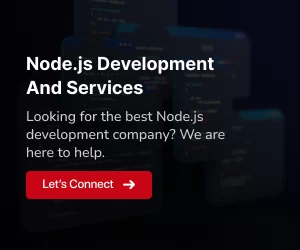In the ever-evolving landscape of web development, staying ahead of the curve is essential. One technology that has made a significant impact and revolutionized the way we interact with APIs is GraphQL. If you’ve ever wondered what GraphQL introduction and API usage is and how it can empower your projects, you’re in the right place.
In this comprehensive guide, we will embark on a journey to demystify GraphQL, providing you with a clear and concise GraphQL introduction and an exploration of its API usage. We’ll cover the fundamental principles of GraphQL, its practical applications in real-world scenarios, and the steps to start using it effectively.
Throughout this blog post, we’ll focus on a keyphrase that encapsulates our primary goal: GraphQL introduction and API usage. This keyphrase will guide us as we delve into the world of GraphQL, and we’ll ensure it’s seamlessly integrated into the content to provide a cohesive and informative reading experience.
So, let’s begin this exploration of GraphQL, unraveling its core concepts and practical applications, and empowering you with the knowledge to leverage this technology effectively in your web development endeavors.
Understanding GraphQL Basics
To embark on our journey of understanding GraphQL, let’s start at the very beginning. GraphQL, or Graph Query Language, is a powerful and flexible technology that’s transforming how we interact with APIs. It was created by Facebook in 2012 and later open-sourced for wider adoption.
In essence, GraphQL is a query language for APIs that allows clients to request exactly the data they need and nothing more. This is a fundamental departure from traditional RESTful APIs, where clients often receive fixed sets of data, including unnecessary information.
Schema and Types:
At the core of GraphQL is the concept of a schema, which acts as a contract between the client and the server. The schema defines the available data and how it can be queried. Within the schema, there are types that specify the structure of the data. As a developer, you need to define the schema and types to represent the data your application works with.Queries:
Queries in GraphQL are used to request data from the server. They are a way for clients to specify precisely what data they need. With GraphQL, you can craft a query that aligns with the structure of your schema, ensuring that you get the data you ask for and nothing more. This level of specificity makes your applications more efficient and responsive.Mutations:
While queries are for reading data, mutations are for modifying it. They are similar to the ‘write’ operations in RESTful APIs. With GraphQL mutations, you can add, update, or delete data as needed.
In summary, GraphQL is all about efficiency, flexibility, and precision in data retrieval. It’s a technology that puts the control in the hands of the client, allowing you to create APIs that serve your application’s specific needs.
Also Read: What is No-Code Backend development?
GraphQL Introduction and API Usage in Real-World Scenarios
Now that we have a solid understanding of the basics of GraphQL, it’s time to explore how this technology shines in real-world scenarios. Let’s dive into some practical examples of how GraphQL can be a game-changer for different types of projects.
1. Building a Blog Application
Imagine you’re in the process of developing a blog application. In the traditional RESTful API world, when a user wants to fetch data for a specific blog post, they typically receive the entire post, including unnecessary data such as the author’s profile. With GraphQL, you have the power to create queries that request only the information you need. This means that you can minimize network traffic, ensuring your application runs more efficiently and responsively.
By specifying in your query that you only require the blog post’s title, content, and publication date, you can cut out the extra information that clutters your response. This not only benefits the end user with faster load times but also reduces server load, making your application more scalable.
2. Mobile App Development
In the world of mobile app development, network efficiency is crucial. GraphQL’s ability to let clients request precisely the data they need becomes even more significant. Consider building a social media app where users have profiles with extensive information. With GraphQL, you can create queries tailored to your app’s requirements.
For instance, when displaying a user’s profile, you can craft a query to fetch just the user’s name, profile picture, and their most recent posts. In contrast, a RESTful API might send back a large amount of data about the user, including details that the mobile app doesn’t require. This fine-grained control allows you to create mobile apps that are not only responsive but also more data-efficient.
3. Collaborative Filtering and Recommendations
GraphQL is a great fit for building recommendation engines and implementing collaborative filtering. Let’s say you’re developing a platform that provides movie recommendations. In this scenario, you need to understand each user’s preferences and behaviors to offer tailored suggestions.
With GraphQL, you can create queries that extract information about a user’s favorite genres, previously watched movies, and their ratings. This data can be used to provide personalized movie recommendations. Traditional RESTful APIs often require multiple requests to gather this information, resulting in slower response times. GraphQL allows you to gather all the necessary data in a single, efficient query.
In these real-world scenarios, the power of GraphQL becomes evident. It enables you to build applications that are more data-efficient, responsive, and precisely tailored to your users’ needs. The ability to control the data you receive and send is a game-changer in the world of API development.
How to Start Using GraphQL
Now that you’ve gained an understanding of what GraphQL introduction and API usage is and how it can benefit various real-world scenarios, you might be eager to get started using it in your own projects. Here’s a step-by-step guide on how to embark on your GraphQL journey.
1. Set Up a GraphQL Server
The first step in working with GraphQL is to set up a server that can handle GraphQL queries. Fortunately, there are several libraries and tools that can help you create a GraphQL server. Some popular options include Apollo Server, Express.js, and the GraphQL.js reference implementation. Choose the one that best fits your tech stack and project requirements.
2. Define Your Schema
With your GraphQL server in place, the next crucial step is to define your schema. In GraphQL, the schema acts as a blueprint that outlines the types of data that can be queried and the relationships between them. You’ll need to create types to represent the data your application deals with, whether that’s users, products, blog posts, or any other entities.
For example, if you’re building an e-commerce application, you might define types like Product, User, and Order. Each type will specify its fields and their data types.
3. Write Queries and Mutations
Queries and mutations are the heart of GraphQL. Queries are used to request data, while mutations are employed to modify data. To create queries and mutations, you’ll need to define them in your schema.
Here’s an example of a simple query to get a user’s details:
type Query {
getUser(id: ID!): User
}And a mutation to update a user’s name:
type Mutation {
updateUser(id: ID!, name: String!): User
}With these definitions in place, clients can send queries to fetch user data and make updates to a user’s name.
4. Execute and Test
After defining your schema, it’s time to start executing queries and mutations to ensure they work as expected. Use tools like GraphiQL or GraphQL Playground to interact with your GraphQL API. This allows you to test your queries, explore the available schema, and fine-tune your requests.
Testing is a crucial step, as it helps you catch any issues in your schema, queries, or mutations. Be prepared to iterate and make adjustments as needed.
5. Optimize and Secure
As your GraphQL API grows and becomes more complex, it’s important to focus on optimization and security. Implement features like pagination to handle large data sets efficiently. Use caching mechanisms to reduce redundant data retrieval. Make sure to secure your API with authentication and authorization mechanisms to protect against unauthorized access.
Optimization and security are ongoing processes. Regularly review your schema and queries to identify areas where performance can be enhanced and security can be strengthened.
By following these steps, you’ll be well on your way to effectively using GraphQL in your projects. Whether you’re building a web application, mobile app, or any other software that relies on APIs, GraphQL’s efficiency and flexibility can greatly benefit your development efforts.
Also Read: Top 10 No-Code Backend Tools in 2023
Benefits and Challenges of GraphQL
As you delve into the world of GraphQL, it’s essential to be aware of both the advantages and challenges associated with this technology. Here’s a balanced view of what to expect when working with GraphQL.
Benefits
Efficiency:
GraphQL minimizes over-fetching of data. Clients can request precisely the information they need, reducing the amount of unnecessary data transferred over the network. This leads to faster load times and a more responsive user experience.Flexibility:
Clients have the power to request data in the structure they desire. They’re not limited to predefined endpoints or responses, making GraphQL highly customizable. This flexibility is particularly beneficial when designing complex, data-rich applications.Reduced Round-Trips:
Traditional RESTful APIs often require multiple requests to fetch related data. GraphQL allows you to retrieve all the necessary data in a single query, reducing the number of API calls and improving performance.Auto-Generated Documentation:
Many GraphQL tools, like Apollo Server, automatically generate documentation for your API based on the schema you’ve defined. This documentation makes it easier for other developers to understand your API and its capabilities.Strongly Typed:
GraphQL is strongly typed, which means that the types and structures of your data are clearly defined. This reduces the chances of runtime errors and enhances development productivity.Versioning Control:
Unlike REST APIs, GraphQL doesn’t necessarily require versioning. Instead, clients can request only the data they need, reducing the likelihood of breaking changes. This simplifies the evolution of your API.
Challenges
Learning Curve:
Understanding the intricacies of GraphQL can be challenging, especially for developers who are new to the technology. Learning how to write complex queries and mutations efficiently requires time and practice.Performance:
While GraphQL offers performance benefits, poorly optimized queries can lead to performance issues. Developers need to pay attention to query optimization, caching strategies, and pagination to ensure smooth API performance.Security:
GraphQL APIs are highly customizable, which can be a double-edged sword. If not properly secured, they are vulnerable to malicious queries. Implementing effective authentication and authorization mechanisms is crucial to protect your API.Backend Complexity:
The server-side implementation of a GraphQL API can be more complex than a REST API. You need to handle query parsing, execution, and validation, which may involve a steeper learning curve for backend developers.Tooling and Libraries:
Although the GraphQL ecosystem is growing, it may not have the same breadth of tooling and libraries as the REST ecosystem. You might need to develop custom solutions or rely on a narrower range of options.Hype and Over-Usage:
As with any technology, there’s a risk of GraphQL being overused in situations where a simpler RESTful API might be sufficient. It’s important to evaluate whether GraphQL is the right choice for your specific project.
In conclusion, GraphQL offers a range of benefits, primarily in terms of efficiency, flexibility, and reduced round-trips. However, it also presents challenges, particularly in terms of the learning curve and the need for robust security and performance optimization. By understanding these factors, you can make informed decisions about when and how to use GraphQL in your projects.
Best Practices for GraphQL API Design
Designing a GraphQL API, with a focus on GraphQL introduction and API usage, requires thoughtful consideration of several factors to ensure that it is efficient, maintainable, and user-friendly. Here are some best practices to keep in mind:
Keep It Simple:
Strive for simplicity in your schema design. Avoid creating overly complex types or deeply nested queries and mutations. Simplicity enhances the maintainability of your API.Version Your Schema:
Just like with RESTful APIs, consider versioning your GraphQL schema. This allows you to introduce changes and new features without affecting existing clients. It ensures backward compatibility and prevents breaking changes from disrupting your users.Documentation Is Key:
Comprehensive documentation is a must for GraphQL APIs. Use tools like Apollo Server, GraphiQL, or GraphQL Playground to automatically generate documentation for your API. A well-documented schema makes it easier for other developers to understand and use your API effectively.Limit Query Depth and Complexity:
To prevent overloading your server with overly complex queries, consider implementing query depth and complexity analysis. By setting query depth and complexity limits, you can ensure that clients don’t create excessively nested or resource-intensive queries that could impact server performance.Use DataLoader for Efficient Data Loading:
DataLoader is a valuable tool for batching and caching multiple data requests. It helps prevent the N+1 query problem, a common issue with many GraphQL APIs. DataLoader allows you to efficiently fetch related data, improving query performance.Implement Authorization and Authentication:
To secure your GraphQL API, implement proper authentication and authorization mechanisms. Depending on your stack, you can use tools like JSON Web Tokens (JWT) or OAuth for user authentication. Ensure that only authorized users can access certain data and operations.Employ Caching Strategies:
Implement caching strategies to improve the performance of your API. Tools like Apollo Client and caching solutions like Redis can help cache frequently accessed data, reducing the load on your server and speeding up responses.Handle Errors Gracefully:
GraphQL APIs return a predictable error format in the response. Ensure that you handle errors gracefully on the client side, providing clear and informative error messages to users or developers. This helps with debugging and enhances the user experience.Batch Mutations:
When making multiple updates to the server, it’s more efficient to batch mutations into a single request whenever possible. This reduces the number of round-trips between the client and server and improves performance.Rate Limiting and Throttling:
Implement rate limiting and request throttling to protect your GraphQL server from abuse or unintentional resource overuse. This helps maintain fair usage and ensures that one client’s actions do not negatively impact others.
By following these best practices, you can design a GraphQL API that is well-structured, secure, and efficient. A well-designed API not only enhances your development process but also provides a better experience for your API users.
GraphQL in the Ecosystem
GraphQL introduction and API usage has made a significant impact in the tech world and is widely adopted by various companies and projects. Its versatility, efficiency, and flexibility have led to its integration into a wide range of applications and services. Here are some notable examples of how GraphQL is being used in the tech ecosystem:
Facebook:
GraphQL was originally developed by Facebook, and it continues to be a fundamental part of their ecosystem. Facebook uses GraphQL extensively in its main app, providing a powerful and efficient way to fetch data for millions of users.GitHub:
GitHub, the world’s leading platform for version control and collaborative software development, has adopted GraphQL for its public API. This allows developers to interact with repositories, issues, pull requests, and user data using GraphQL queries.Shopify:
Shopify, a popular e-commerce platform, has embraced GraphQL for its API. This enables developers to build custom storefronts and apps that seamlessly integrate with the Shopify platform. GraphQL’s flexibility is particularly beneficial for managing complex e-commerce data.Twitter:
Twitter has started to experiment with GraphQL for its APIs. GraphQL allows Twitter to provide a more customizable and efficient way for developers to interact with the platform’s vast array of data, such as tweets, user profiles, and trends.Airbnb:
Airbnb utilizes GraphQL for its API, allowing users to search for listings, make reservations, and interact with hosts and guests. The flexibility of GraphQL is well-suited to the dynamic nature of the hospitality industry.The New York Times:
The New York Times has implemented GraphQL for its developer platform. This allows developers to access a wealth of news and media content efficiently, making it easier to integrate New York Times content into their own applications.
Also Read: Node.js vs .NET Core: Choosing the Right Backend
Resources for Learning GraphQL
If you’re interested in learning GraphQL introduction and API usage, there are various resources available to help you get started and become proficient in this technology. Here’s a list of resources, including online courses, documentation, books, and communities
GraphQL Official Documentation:
The official GraphQL website provides comprehensive documentation, including a thorough introduction, a query language reference, and guides for getting started with GraphQL.Apollo GraphQL Documentation:
Apollo is a popular GraphQL client and server library. Their documentation includes guides on both client and server implementation, along with best practices.How to GraphQL:
This interactive online tutorial is a great starting point for beginners. It covers everything from the basics to more advanced topics and includes practical exercises and examples.Online Courses:
Udemy offers a variety of GraphQL courses for all skill levels, from introductory courses to in-depth, hands-on tutorials. Coursera also provides GraphQL courses from top universities and institutions. edX offers courses in collaboration with universities and institutions, covering GraphQL and related topics.Books:
“Learning GraphQL” by Eve Porcello and Alex Banks is an excellent resource for understanding GraphQL concepts and practical implementation. “GraphQL in Action” by Samer Buna provides an in-depth look at GraphQL and how to use it effectively in real-world applications.Community Forums:
Stack Overflow – GraphQL: The GraphQL tag on Stack Overflow is a great place to ask questions and find answers related to GraphQL development. r/graphql (Reddit): The GraphQL subreddit is a vibrant community where developers discuss GraphQL-related topics, share resources, and seek advice.GitHub GraphQL API Explorer:
Explore the GitHub GraphQL API using their interactive explorer. This hands-on experience can help you understand how GraphQL queries work in practice.YouTube Tutorials:
Many developers and organizations have created YouTube tutorials and video series on GraphQL. A quick search on YouTube will yield a wide range of video content to learn from.GitHub Repositories:
Explore open-source GraphQL projects on GitHub. You can find sample applications, server implementations, and libraries to examine and learn from.Online Communities:
Join online communities and discussion forums dedicated to GraphQL, such as the GraphQL Foundation, GraphQL Slack, and GraphQL Meetup. These communities are excellent places to connect with other developers, ask questions, and stay up-to-date on GraphQL trends.
By exploring these resources, you’ll be well on your way to learning and mastering GraphQL, whether you’re a beginner or an experienced developer looking to expand your skill set.
Conclusion
In this comprehensive guide, we’ve delved into the world of GraphQL, exploring its fundamentals, practical applications, and best practices. We’ve also examined its prevalence in the tech ecosystem and provided resources for further learning.
GraphQL introduction and API usage, with its efficiency, flexibility, and reduced round-trips, has become a powerful tool for web and app developers. It empowers developers to create APIs that are more data-efficient and responsive, providing a tailored user experience.
As you embark on your journey with GraphQL, remember that while it offers numerous benefits, it also presents challenges. The learning curve, query optimization, and security considerations are factors that require your attention.
By following best practices and staying up-to-date with the GraphQL community and resources, you can harness the full potential of this innovative technology. Whether you’re building a blog application, a mobile app, an e-commerce platform, or any other project, GraphQL’s adaptability can significantly enhance your development process.
So, go forth and explore GraphQL, experiment with queries and mutations, design efficient schemas, and secure your APIs. With the knowledge and resources at your disposal, you’re well-equipped to create data-driven applications that are tailored to your users’ needs. Happy coding!















